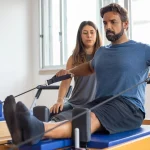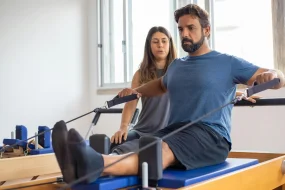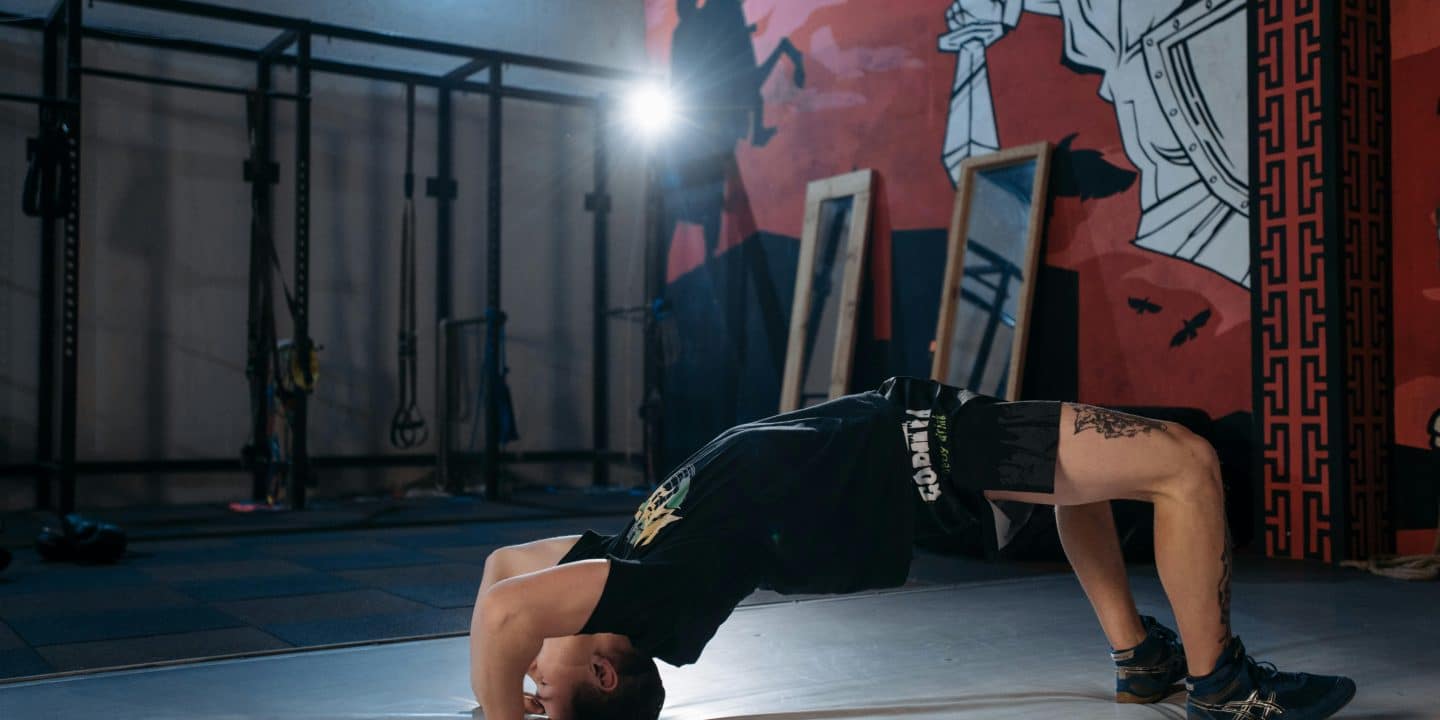
Why Your Back Deserves More Attention?
Imagine finishing a long day at work, only to feel like a pretzel—stiff shoulders, a throbbing lower back, and that familiar slump you can’t seem to shake. You’re not alone. In today’s sedentary world, back pain and poor posture plague millions. But here’s the liberating truth: You don’t need weights, machines, or a gym to rebuild a strong, resilient back. Back bodyweight exercises are your ticket to standing taller, moving freely, and reclaiming control over your body.
This guide isn’t just about aesthetics (though a sculpted back is a nice perk!). It’s about functional strength—the kind that helps you lift your toddler without wincing, conquer a hiking trail, or finally nail that yoga pose. Let’s dive into the exercises, science, and strategies that will transform your back from a weak link to your greatest asset.
Why Bodyweight Works?
Back bodyweight exercises leverage gravity and your own body to strengthen these muscles in harmony. Unlike machines that isolate muscles, bodyweight movements train your back to work with your core, glutes, and shoulders, just like it does in real life. A 2021 study in Sports Medicine found that bodyweight training improves functional strength (think: carrying groceries, playing sports) by 21% more than traditional weightlifting.
Your back is a masterpiece of anatomy:
- The latissimus dorsi (“lats”) act as your body’s pulleys, powering pulls and stabilizing your spine.
- Rhomboids retract your shoulder blades, combating the hunched “office posture.”
- Trapezius (“traps”) helps you shrug, turn your head, and maintain neck alignment.
- Erector spinae run along your spine, keeping you upright and bending you backward.
What makes back bodyweight exercises uniquely effective? They engage proprioception—your body’s ability to sense movement and position—which enhances neuromuscular coordination. For example, a pull-up challenges your lats, but it also forces your core, grip, and scapular stabilizers to work in sync. This holistic engagement mimics real-world demands, like lifting a heavy box or playing with your kids, making back bodyweight exercises indispensable for functional fitness.
Additionally, back bodyweight exercises promote joint health. Movements like inverted rows and bird-dogs strengthen the rotator cuff and spinal stabilizers without the compressive load of heavy weights. A 2023 review in the Journal of Orthopaedic & Sports Physical Therapy highlighted that bodyweight training reduces injury risk in athletes by improving muscle balance and mobility.
Top 8 Back Bodyweight Exercises: Detailed Guides
1. Pull-Up Variations
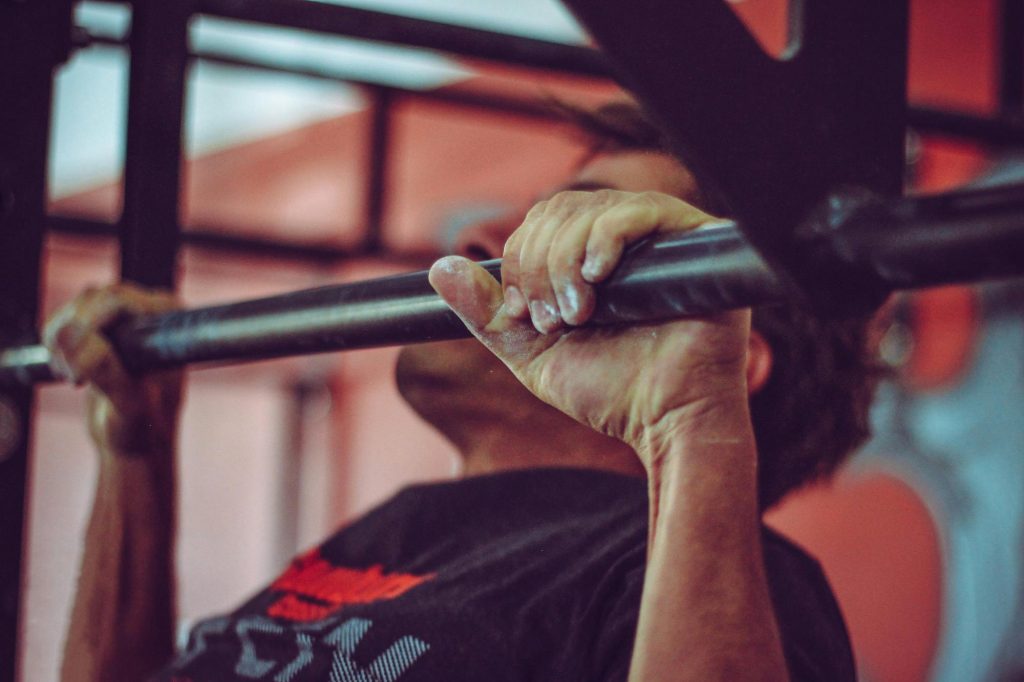
Pull-ups are the ultimate back bodyweight exercise, targeting your lats, rhomboids, and biceps. They mimic real-world movements like climbing or hauling yourself over a wall. Plus, mastering your first pull-up is a rite of passage in fitness! Beyond raw power, pull-ups improve grip endurance and shoulder stability, making them a cornerstone of functional training. Whether you’re a rock climber, a parent lifting a child, or someone rehabbing from injury, this exercise builds resilience that translates to everyday life.
Step-by-Step Guide:
- Grip the Bar: Use an overhand grip (palms facing away), hands slightly wider than shoulder-width. Ensure your thumbs wrap securely around the bar for stability.
- Engage Core and Scapulae: Hang freely, then pull your shoulder blades down and back as if you’re squeezing a pencil between them. This preps your lats and protects your shoulders.
- Pull Up: Drive your elbows toward your ribs, lifting your chest toward the bar. Aim to bring your collarbone to the bar for a full range of motion.
- Lower Slowly: Take 3–4 seconds to descend—control is key. Avoid dropping abruptly, as this wastes the eccentric (muscle-lengthening) phase, which is crucial for growth.
Modifications:
- Inverted Rows: Lie under a sturdy table, grip the edge, and pull your chest up. Adjust difficulty by bending your knees (easier) or extending your legs straight (harder).
- Band-Assisted: Loop a resistance band around the bar and place one foot in it for momentum help.
Caution: Avoid kipping (swinging) to protect your shoulders. If you feel shoulder pain, switch to inverted rows or reduce the range of motion. Always warm up your rotator cuffs with arm circles or band pull-aparts before attempting pull-ups.
2. Superman Holds

This foundational back bodyweight exercise strengthens your posterior chain—lower back, glutes, and shoulders—while reversing the slouch caused by sitting. It’s like a reset button for your spine! Superman holds are particularly effective for office workers, cyclists, or anyone who spends hours in a forward-leaning position. They also improve balance and coordination, as you’re forced to stabilize your body against gravity.
Step-by-Step Guide:
- Lie Face-Down: Stretch your arms overhead like Superman mid-flight, legs straight, and toes pointed.
- Lift Everything: Raise your arms, chest, and legs 6 inches off the ground. Imagine lengthening your spine as you lift.
- Squeeze and Hold: Engage your glutes and lower back muscles, holding for 10–20 seconds. Focus on breathing deeply—inhale through the nose, exhale through the mouth.
For a dynamic twist, pulse your limbs up and down 1 inch for 10 reps.
Caution: Don’t hyperextend your neck. Keep your gaze slightly downward to maintain spinal alignment. If you have lower back issues, reduce the height of your lift or shorten the hold time.
3. Bird-Dog

A physiotherapist-approved back bodyweight exercise that builds spinal stability and reduces lower back pain. It builds spinal stability, reduces lower back pain, and teaches your core and back to work together, essential for lifting, twisting, or even walking. Bird-dogs also improve proprioception (body awareness), making them ideal for athletes recovering from injury or seniors aiming to prevent falls.
Step-by-Step Guide:
- Start on All Fours: Position your hands directly under your shoulders and knees under your hips. Tuck your toes under for stability.
- Extend Arm and Leg: Reach your right arm forward (parallel to the floor) and left leg back, keeping your hips level. Avoid letting your hips sag or twist.
- Hold and Return: Pause for 5 seconds, squeezing your glutes and engaging your core. Slowly return to the starting position and switch sides.
For added core work, tap your right elbow to your left knee between reps.
Caution: Avoid arching your lower back. Imagine balancing a book on your spine to maintain neutrality. If wrist pain occurs, perform the exercise on your fists or use a padded mat.
4. Arch Body Holds
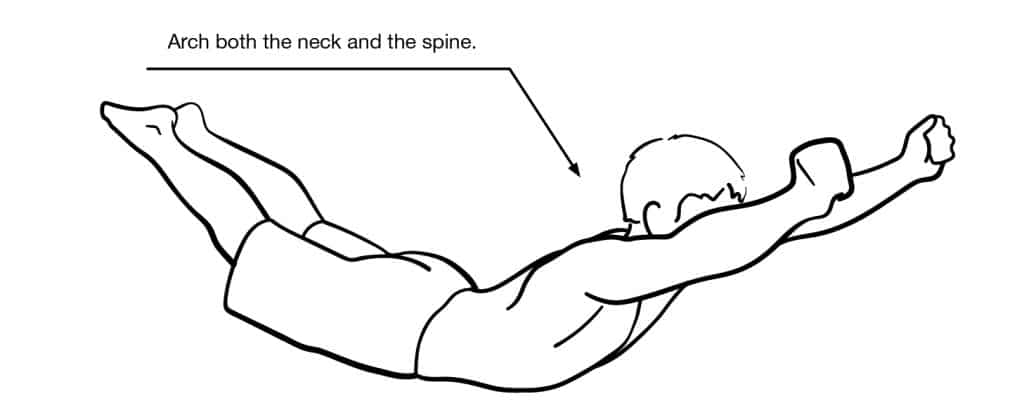
This full-body back bodyweight exercise builds endurance in your erector spinae and glutes. It’s perfect for athletes, parents, or anyone who stands for long periods. Arch body holds also enhance body awareness, teaching you to engage your entire posterior chain—a skill that improves deadlifts, squats, and even running form.
Step-by-Step Guide:
- Lie Face-Down: Extend your arms overhead and legs straight, toes pointed.
- Lift into a “Banana”: Raise your arms, chest, and legs off the ground, forming a gentle curve from fingertips to toes.
- Hold and Breathe: Maintain the position for 15–30 seconds, breathing deeply into your diaphragm.
Add gentle rocking motions (1–2 inches forward/backward) to challenge balance and coordination.
Caution: Engage your core to prevent lower back strain. If you feel compression in your lumbar spine, shorten the hold time or reduce the height of your lift.
5. Reverse Snow Angels
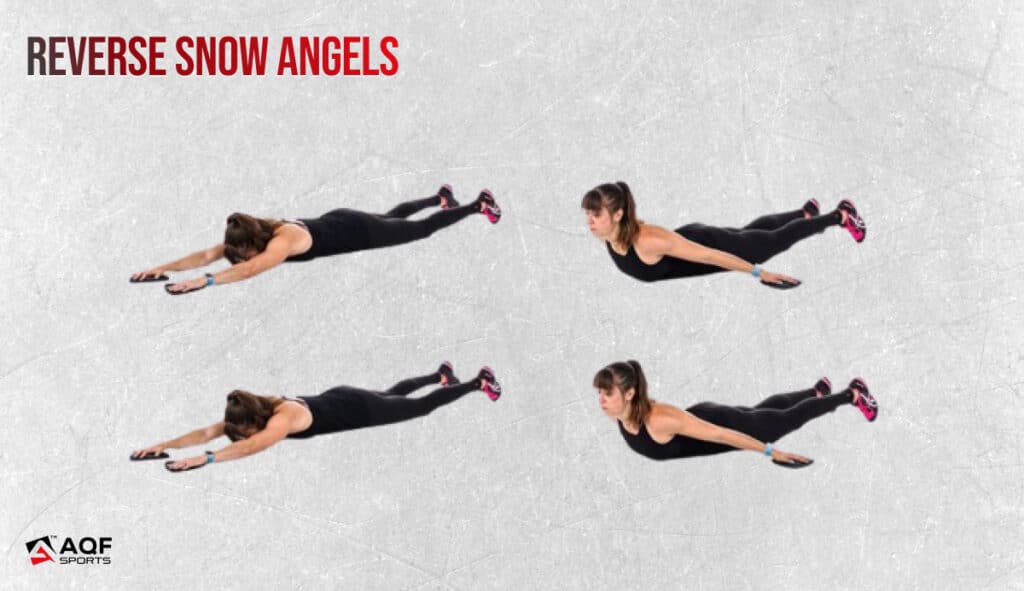
These “angels” target your rhomboids and rear delts, undoing the rounded shoulders caused by typing or driving. This is a corrective back bodyweight exercise for rounded shoulders and poor posture. Plus, they improve shoulder mobility for overhead reaches. Reverse snow angels are a hidden gem for posture correction, especially for those who spend hours at a desk or steering wheel. They also enhance blood flow to the upper back, relieving tension headaches and stiffness.
Step-by-Step Guide:
- Lie Face-Down: Position your arms at your sides, palms facing down, and legs straight.
- Sweep Arms Overhead: Move your arms in a semicircle, keeping them 2–3 inches off the ground, until they meet above your head.
- Return Slowly: Reverse the motion, squeezing your shoulder blades together as you bring your arms back to your sides.
Perform seated or standing, bent-over if lying prone is uncomfortable.
Caution: Keep movements small and controlled if you have shoulder impingement. Avoid shrugging your shoulders toward your ears.
6. Prone Y-T-W Raises
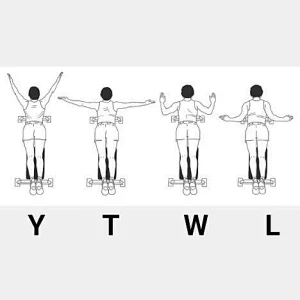
This trio of movements (Y, T, W) strengthens your scapular muscles and rotator cuff, reducing injury risk for swimmers, throwers, or desk workers. This back bodyweight exercise enhances scapular mobility and rotator cuff strength. The sequence enhances scapular mobility, which is critical for overhead activities like lifting luggage or painting a ceiling.
Step-by-Step Guide:
- Prone Position: Lie face-down with arms extended in a Y shape (45-degree angle from your head).
- Lift and Hold: Raise your arms 2 inches off the ground, hold for 2 seconds, then lower.
- Transition to T: Move arms to a T position (horizontal to your body), lift, hold, and lower.
- Form a W: Bend your elbows to 90 degrees, creating a W shape with your arms. Lift, hold, and lower.
Squeeze a pencil between your shoulder blades during the W phase to maximize engagement.
Caution: Avoid shrugging your shoulders toward your ears. Keep your neck neutral—imagine a straight line from your head to your tailbone.
7. Bent-Over Thoracic Extensions
A mobility-focused back bodyweight exercise to combat “tech neck”. This move combats “tech neck” by mobilizing your thoracic spine (mid-back) and strengthening the muscles that pull your shoulders back. It’s particularly beneficial for yogis, weightlifters, or anyone wanting to improve rotational mobility for sports like golf or tennis.
Step-by-Step Guide:
- Stand Tall: Place your hands behind your head, elbows flared out to the sides.
- Hinge Forward: Bend at the hips, lowering your torso until it’s nearly parallel to the floor. Keep your back flat.
- Arch Upward: Lift your chest toward the ceiling, focusing on stretching your mid-back. Hold for 2 seconds, then return.
Perform seated to isolate the thoracic spine. Sit on a chair, hinge forward, and arch upward.
Caution: Keep your core engaged to avoid lower back strain. If you feel dizzy, reduce the hinge depth.
8. Dead Bugs

Dead bugs train your core and back to coordinate during movement—critical for safe lifting, running, or even getting out of bed! A rehab-friendly back bodyweight exercise for core-back coordination. They’re a rehab staple for postpartum individuals or those recovering from lower back injuries, as they teach pelvic stability without spinal load.
Step-by-Step Guide:
- Lie on Your Back: Extend your arms toward the ceiling, knees bent 90 degrees (shins parallel to the floor).
- Lower Opposite Limbs: Slowly extend your right arm and left leg toward the floor, stopping just before your lower back arches.
- Return and Switch: Bring limbs back to the starting position and repeat on the opposite side.
Exhale as you lower to activate your transverse abdominis (deep core muscles).
Caution: If your back arches, reduce the range of motion or place a yoga block under your lower back for feedback.
Common Mistakes to Avoid
Rushing Reps: Slow, controlled movements maximize gains in back bodyweight exercises. Slow, controlled movements (3–4 seconds per rep) maximize muscle tension and reduce injury risk. Fast, jerky motions cheat your muscles and strain joints.
Neglecting Scapular Engagement: Failing to retract/depress shoulder blades during rows or pull-ups shifts effort to the arms and neck. Always initiate pulls with your back muscles.
Overarching the Lower Back: In moves like Superman holds, excessive arching compresses the lumbar spine. Engage your core and glutes to maintain a neutral spine.
Ignoring Breathing: Holding your breath during holds or reps spikes blood pressure. Inhale during the eccentric (lowering) phase, exhale during the concentric (lifting) phase.
Why Nutrition is Non-Negotiable for Back Bodyweight Exercises
Even the most effective back bodyweight exercises and heavy weight training routines won’t unlock their full potential without proper nutrition. In 2025, fitness isn’t just about movement—it’s about synergy between training and fueling your body with precision. For mesomorphs and athletes prioritizing back bodyweight exercises, muscle growth, recovery, and sustained energy demand two critical pillars: protein and calories, both of which must come from nutrient-dense, whole foods.
Protein Power: Aim for 1.2–2.2g of protein per kg of body weight daily. Prioritize lean meats, fish, eggs, or plant-based options like lentils and tempeh. Protein repairs micro-tears from moves like pull-ups and inverted rows, ensuring growth after intense back bodyweight exercises
Calorie Quality: Mesomorphs burning calories through back bodyweight circuits need nutrient-dense fuel. Add 250–500 calories above maintenance for muscle growth, focusing on complex carbs (oats, sweet potatoes), healthy fats (avocado, nuts), and fiber-rich veggies.
Timing Wins: Eat a balanced meal 1–2 hours pre-workout (e.g., chicken + quinoa). Post-exercise, refuel within 45 minutes with protein + carbs (shake + banana) to optimize recovery after back bodyweight exercise.
2025 Nutrition Hacks:
- Use adaptogens like ashwagandha to reduce stress.
- Try sustainable proteins (lab-grown or algae-based).
- Leverage AI meal planners for personalized macros.
Without proper nutrition, even the best back bodyweight exercises fall short. Pair training with strategic eating to unlock strength and agility.
Ready to fuel your gains? Check out my Ultimate Guide to Healthy Eating for Strength for meal plans, recipes, and science-backed tips to power your bodyweight workouts!
Sample Workouts
Beginner Routine (3x/week):
- Inverted Rows: 3 sets of 8–10 reps. Rest 60 seconds between sets. Focus on squeezing shoulder blades at the top. (a foundational back bodyweight exercise)
- Bird-Dog: 3 sets of 10 reps/side. Pause for 3 seconds in the extended position.
- Reverse Snow Angels: 3 sets of 12 reps. Use a 2-second tempo on the upward sweep.
Progression Tip: After 2 weeks, add 1–2 reps per set or reduce rest time to 45 seconds.
Advanced Routine (3x/week):
- Pull-Ups: 4 sets of 6–8 reps. Use a 4-second lowering phase to increase time under tension. (the pinnacle of back bodyweight exercises)
- Prone Y-T-W Raises: 4 sets of 10 reps. Hold each position (Y, T, W) for 2 seconds.
- Arch Body Holds: 4 sets of 30 seconds. Add 5 seconds weekly until you reach 60 seconds.
Progression Tip: Incorporate tempo variations (e.g., 2-second pause at the top of pull-ups) or supersets (e.g., pair pull-ups with dead bugs).
Your Back, Your Powerhouse
Your back is more than a collection of muscles—it’s the pillar of your strength, posture, and confidence. With these back bodyweight exercises, you’re not just working out; you’re rewiring your body to move with grace and power.
Your Challenge: Try these back bodyweight exercises for 4 weeks and track your progress, or pick 3 exercises and practice them 3x/week for a month. Notice how standing taller feels—and how much lighter everyday tasks become.
As movement guru Katy Bowman says, “Your body is designed to move. Let your back lead the way.”



